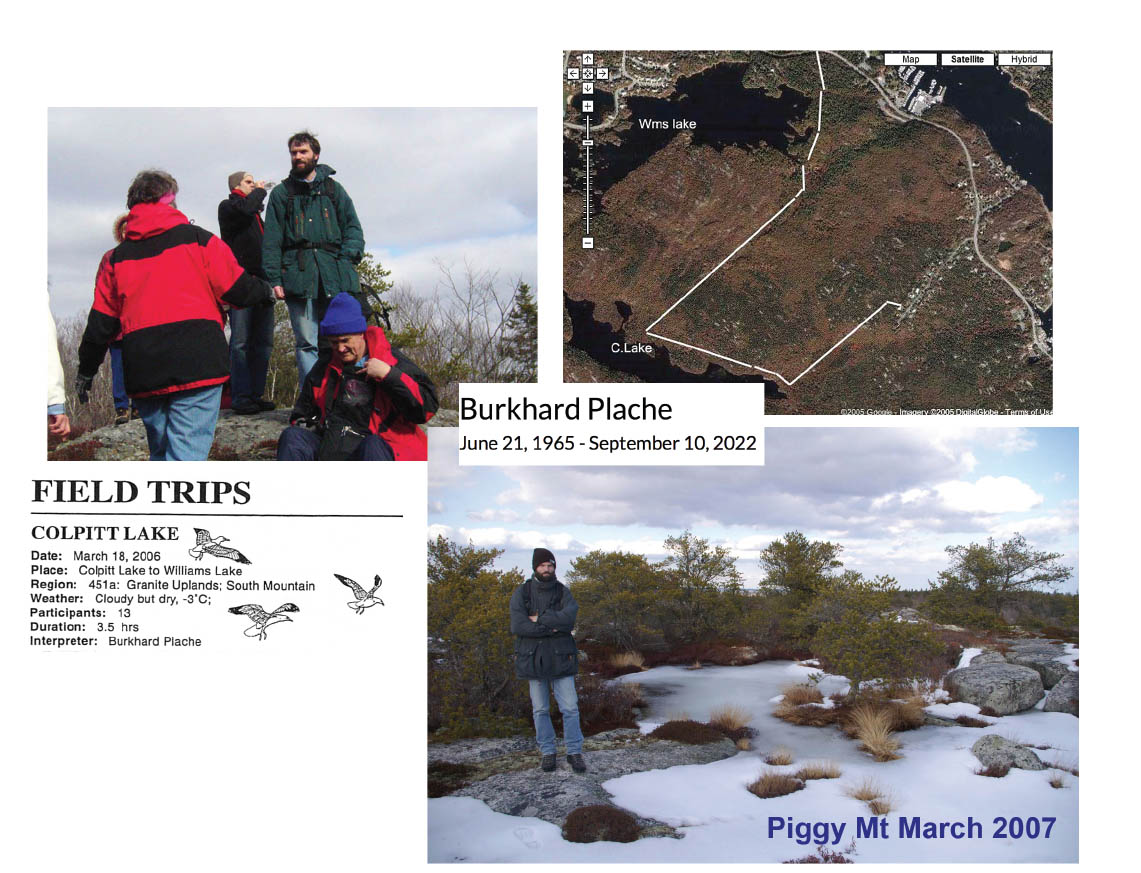Drafting…
ECOLOGY WORKSHOP PAGES —>1. Introduction (This Page) (DP) —>1. Introduction (This Page) (DP)Whats there? – 2. Homework (DP) – 3. Overview of Environmental Factors (DP) – 4. JP-Crowberry Barrens & Fire Mgmt (DP) – 5. Forest Birds (JBD) – 6. Specialist Birds (FL) – 7. Some Conservation Perspectives (KM) – 8. Discussion Synthesis – 9. Highlights – 10. Threats & Challenges |
About these pages: On Oct 25, 2022, a subgroup of participants in the Backlands Coalition held a “Backlands Ecology Workshop” led by David Patriquin (Prof of Biology, Dalhousie University, retired). This set of ten pages is essentially a report on the workshop, designed for use by members of the Backlands Coalition working group which is meeting monthly, but everyone is welcome to look at them. The 10 pages are based on copies of the slides presented at the workshop, and a zoom recording of the workshop. Use the menu at the top of each page to navigate between the 10 pages. Pages 1 to 8 are formal records of the proceedings. Pages 9 and 10 can be considered working documents, i.e. we will continue to modify them, expand etc.
- David P Dec 4, 2022.
The purpose of the workshop was to to explore these questions:
– How do we describe the Backlands? What’s there?
– What are the ecological highlights? From a P.R. perspective? What’s special locally, provincially, nationally?
– What are the current and emerging threats to the EI (Ecological Integrity) of the Backlands?. What are the challenges to maintaining a high degree of EI in the Backlands?
WHAT IS “ECOLOGICAL INTEGRITY”?
As defined in the Canada National Parks Act (2001)*:
…a condition that is determined to be characteristic of its natural region and likely to persist, including abiotic components and the composition and abundance of native species and biological communities, rates of change and supporting processes.
* Cited in Consolidated Guidelines for Ecological Integrity Monitoring in Canada’s National Parks, Parks Canada Agency 2011.
From LaPaix et al., 2009*: “Systems with a high degree of EI are characterized by a relatively high resilience and resistance to changes in the intensity of environmental stressors…some attributes
• Richness of indigenous biodiversity values.
• Complexity in structure and function.
• Presence of large species and top predators.
• A high degree of closure in nutrient cycling (i.e., nutrient
capital is not “leaked” to the ambient environment).
• The ecosystem is self-maintaining, and does not require
anthropogenic management to conserve its key attributes.”
*Ground vegetation as an indicator of ecological integrity
LaPaix et al., 2009. Environmental Reviews 17:249-265. View PDF of full paper.
David P began by acknowledging that we are in Mi’kmaki, the ancestral and unceded territory of the Mi’kmaki. David dedicated the workshop to Burkhard Plache who introduced many to the Backlands, including David P. Burkhard died prematurely in September of this year.

Burkhard Plache leading a Halifax Field Naturalists hike
into the Backlands on March 16, 2006.View Hike Report
Click on image for a larger version
